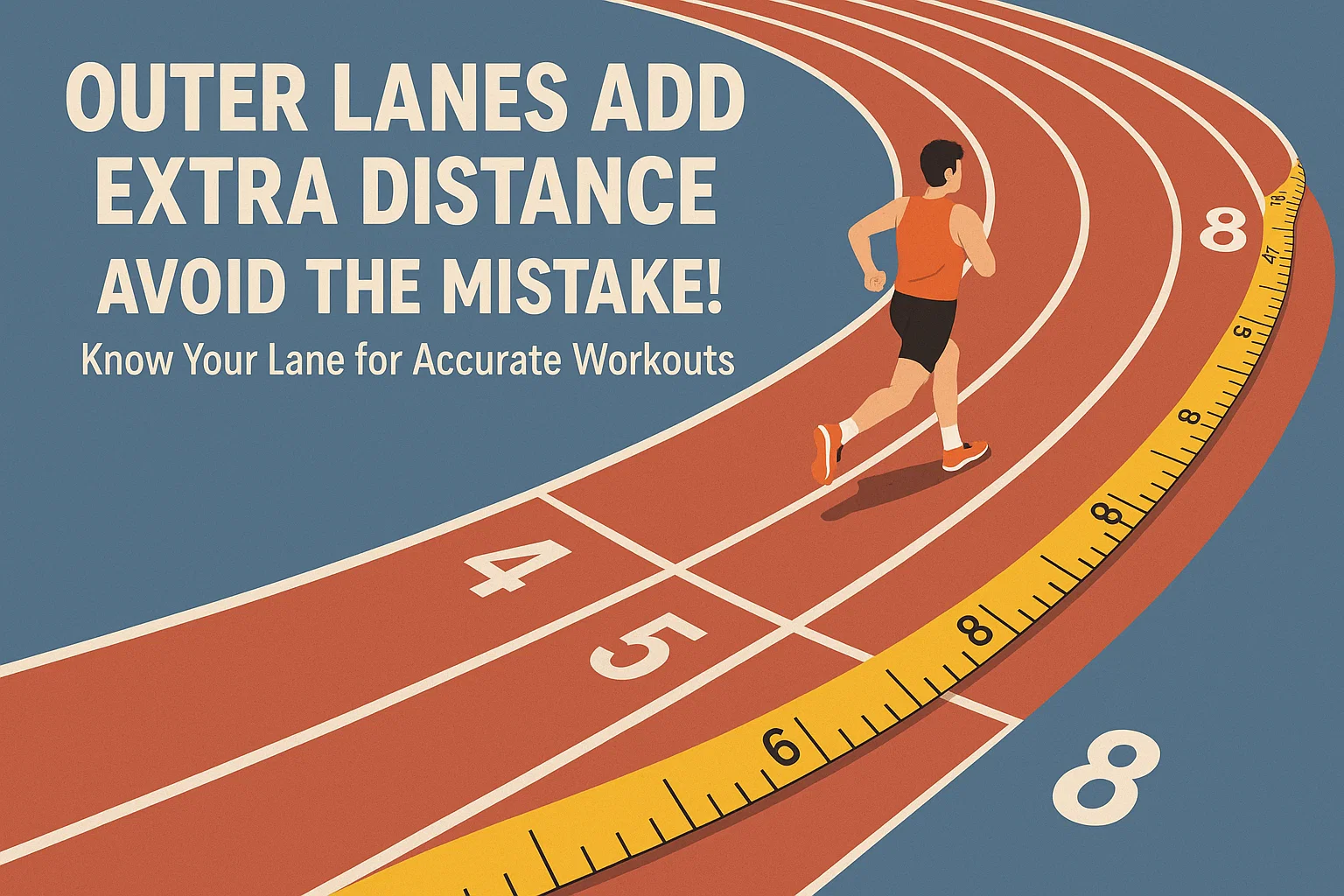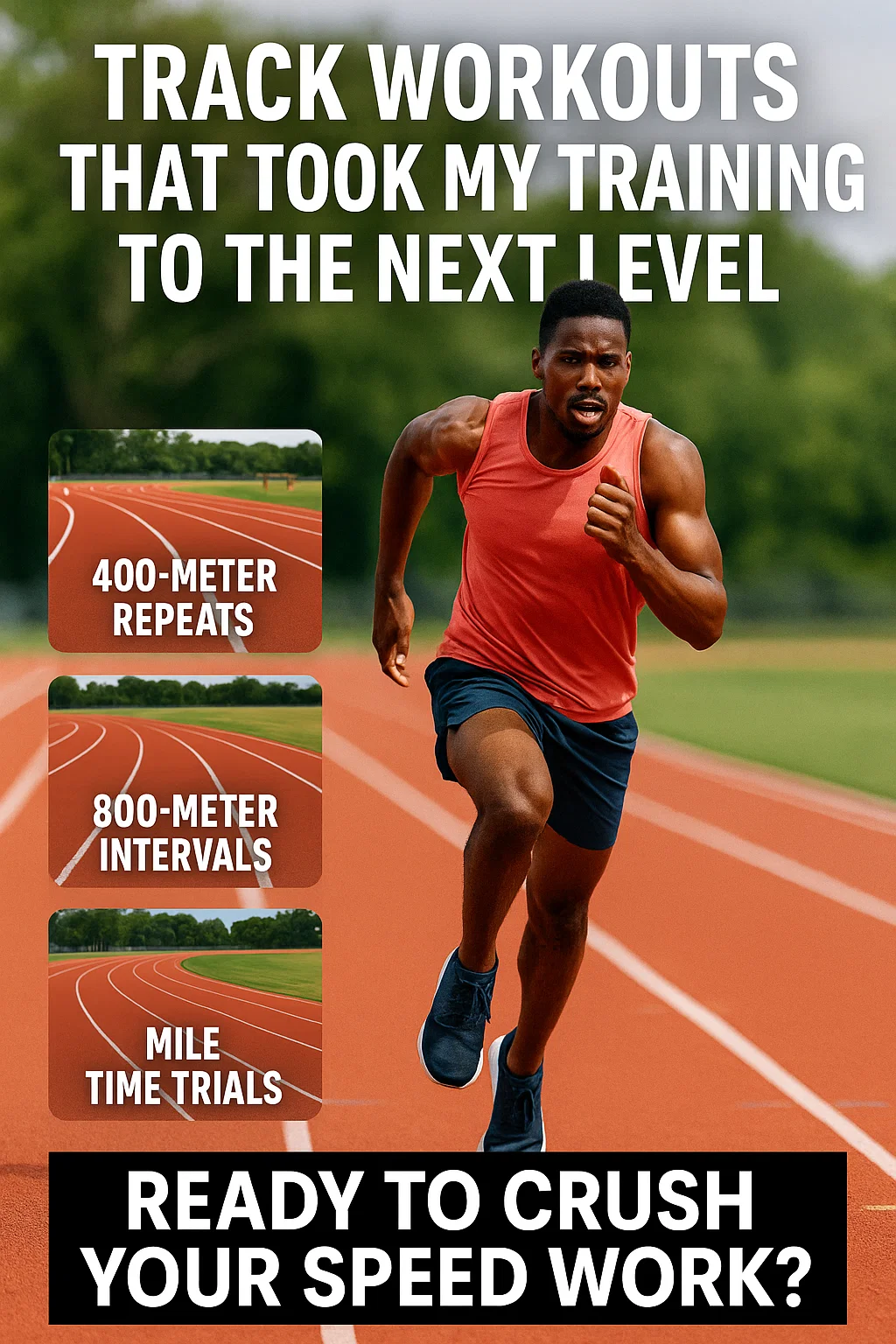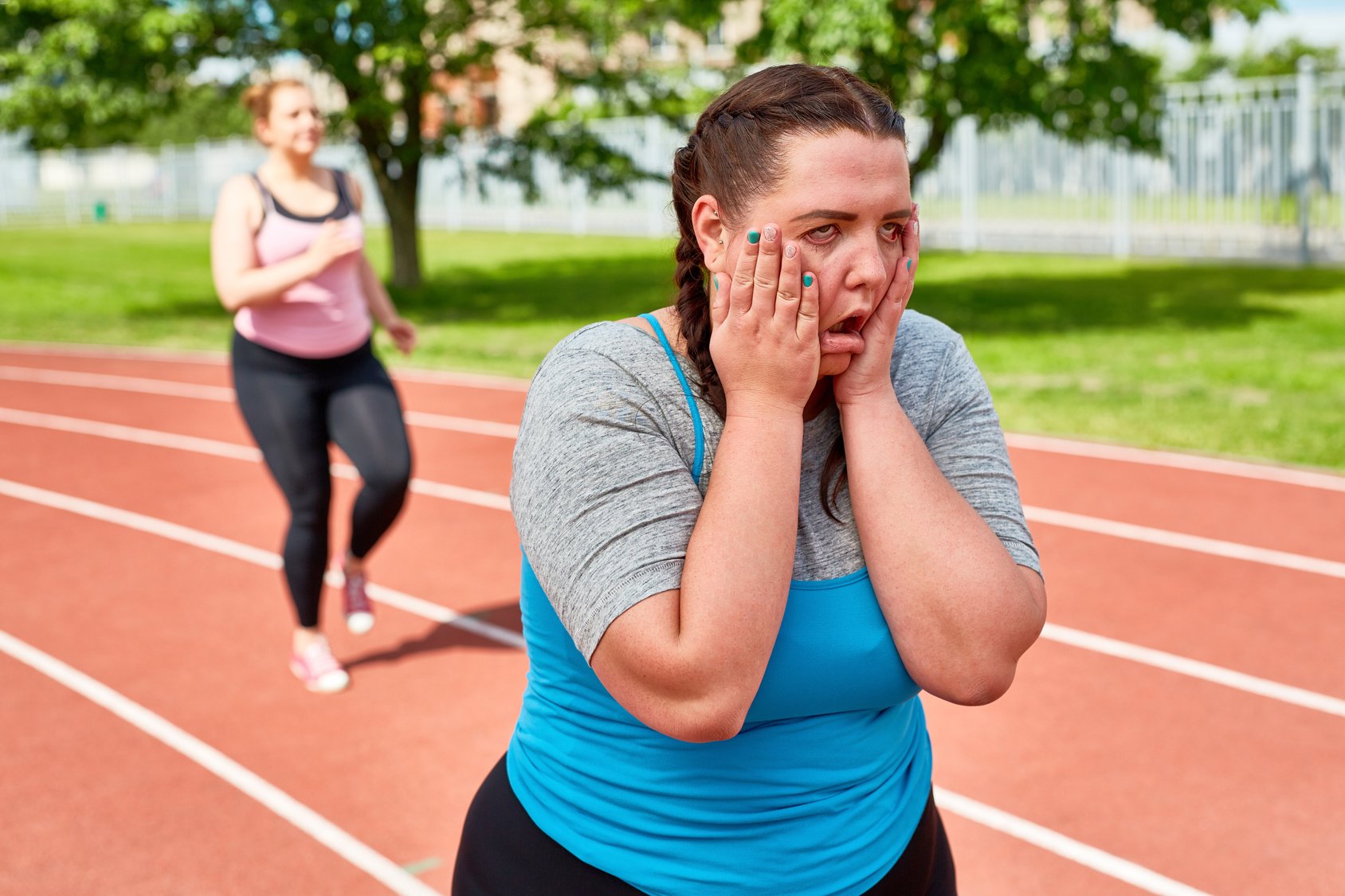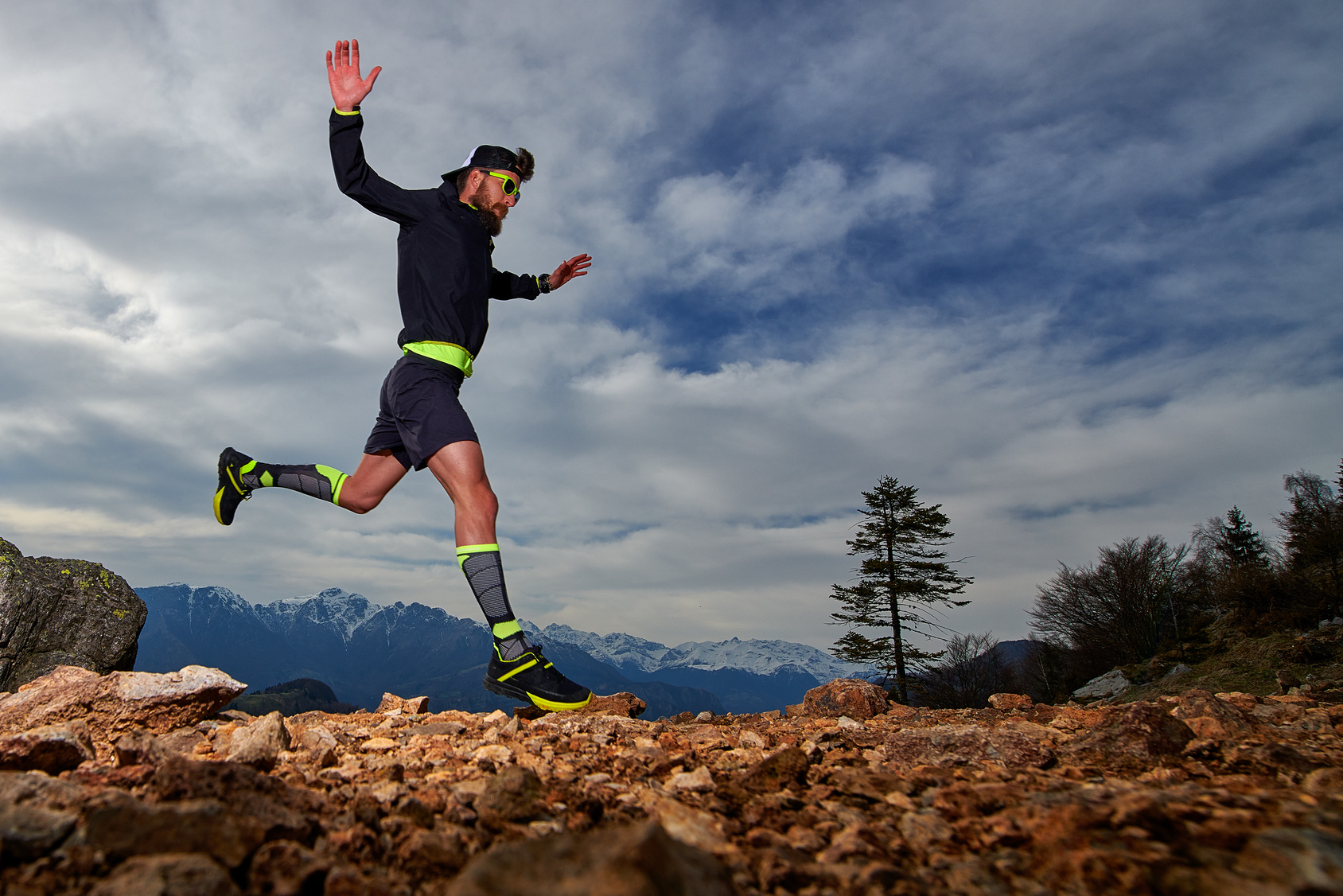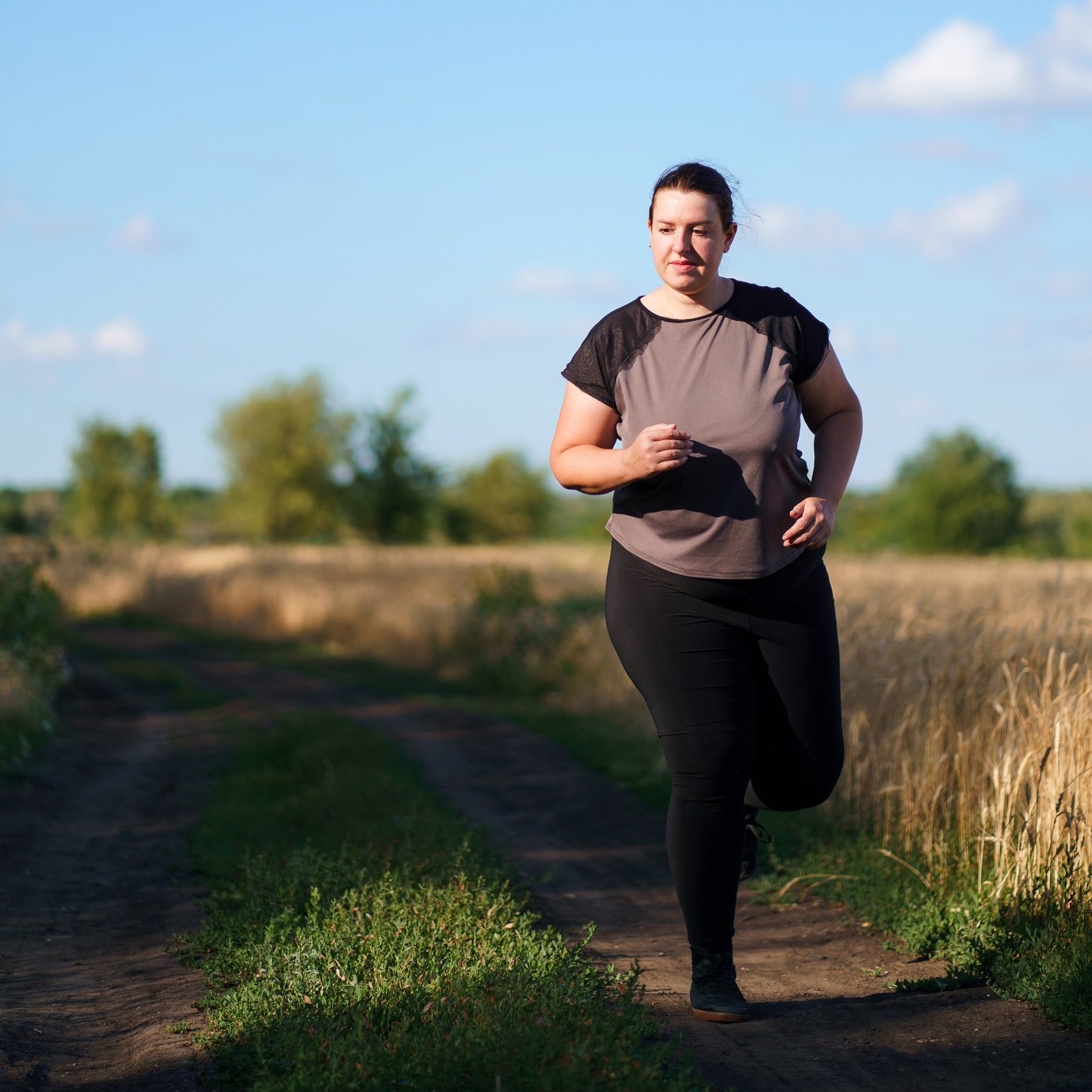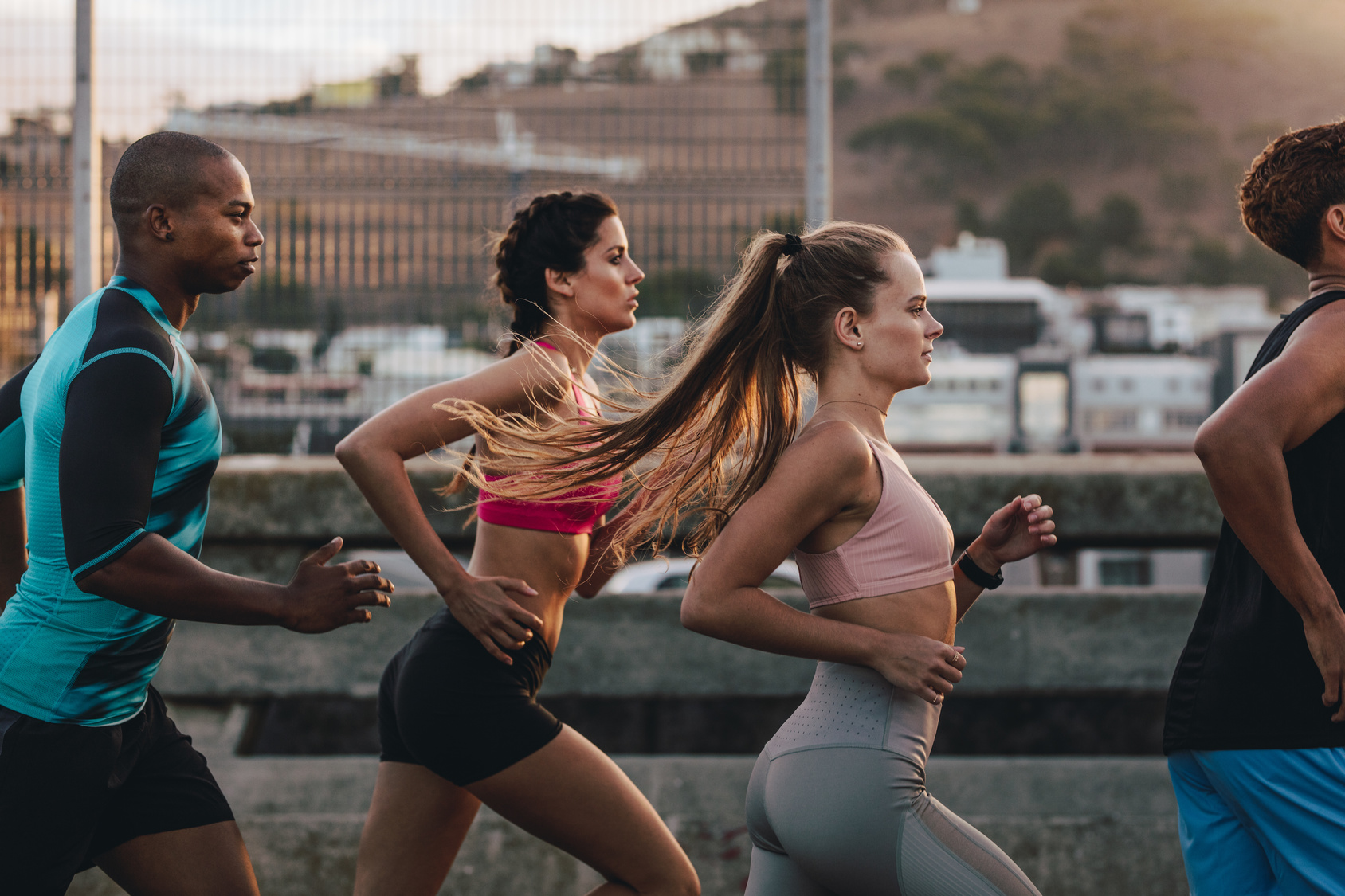How to Handle Bloating After Running: What’s Causing It & How to Fix It
Running can make you feel amazing — until it doesn’t. That uncomfortable bloated, puffy, or gassy feeling after a hard run? It’s more common than you think.
And no, you’re not broken. You just need to understand what’s going on.
Let’s break down the top culprits of post-run bloating — and how to fix each one.
1. Air Swallowing (Aerophagia)
Quick test: Next time you’re deep into a hard run, pay attention to your breathing. Are you gulping air, breathing fast and out of rhythm? That’s aerophagia — the fancy term for swallowing air.
What happens: that air ends up trapped in your stomach or intestines, making you feel bloated and full (even if you haven’t eaten much). It’s worse if you’re also taking in gels, chewing gum, or sipping drinks fast during the run.
One runner shared how her gut felt “done taking things in” by mile 20 of a long run — stuffed from air and fueling. Once she tweaked her breathing and mid-run nutrition strategy, the bloating disappeared.
What to do:
- Practice rhythmic breathing (inhale for 3 steps, exhale for 2, or whatever cadence works for you).
- Relax your jaw and face.
- Slow down if your breathing feels panicked or erratic.
- Stay upright post-run and give your body time to off-gas naturally.
2. Overhydration (Hyponatremia Risk)
Yes, hydration is critical — but too much plain water, especially without electrolytes, can backfire. Drinking too much water too fast can lead to hyponatremia, where your blood sodium levels get diluted.
The first sign? Bloating and water retention.
What it looks like:
- Puffy fingers
- Sloshy, distended stomach
- Clear urine (often mistaken as “great” hydration — it’s not if you feel awful)
One athlete I coached drank over 3 liters of plain water during a marathon — with almost no electrolytes. He finished with a balloon belly and swollen hands. Once he added salty snacks and eased off the water? The bloating vanished.
What to do:
- Don’t chug water before your run. Sip gradually.
- For runs over 60 minutes, include electrolytes (sodium, potassium, etc.) via sports drinks or tablets.
- Drink to thirst, not on a rigid schedule unless racing in extreme heat.
- Pay attention to how your stomach feels — sloshy = ease back or add electrolytes.
Pro tip: Studies show runners feel less bloated after drinking the same volume of electrolyte drink compared to plain water. Electrolytes help your body absorb fluid — not just store it.
3. Eating Too Soon Before Running
Ever gone out for a run and felt like your stomach just didn’t want to cooperate? That’s what happens when you eat too close to a workout.
When you run, blood flow diverts from digestion to your muscles — and anything still hanging out in your gut gets stuck. It just sits there. And ferments.
What happens:
- Food ferments → gas builds up
- Digestion slows → bloating and discomfort
- You feel sluggish, full, or nauseated
High-fat, high-fiber, high-protein, and large meals are the worst offenders.
❌ Cereal, salads, burgers, beans, dairy, protein shakes, spicy food — all solid choices in life, but not before a run.
I once ate a giant chicken burrito and ran an hour later. Big mistake. My stomach felt like cement the entire run, and I was burping through mile 4. Never again.
What to do:
- Eat your main meal 2–3 hours before running (some need 3–4).
- If you need a snack closer to your run, stick with small, simple carbs:
- A banana
- Half a bagel
- Toast with a little honey
- Avoid fatty or fibrous foods 2–3 hours pre-run.
Golden rule: run light, not loaded.
4. Artificial Sweeteners & Sports Drinks: The Sneaky Bloat Bomb
Sometimes it’s not your pre-run meal — it’s what’s hiding in your bottle or gel packet.
A lot of “healthy,” “zero sugar,” or “low-cal” endurance products are loaded with artificial sweeteners or sugar alcohols that your gut doesn’t know what to do with.
We’re talking sorbitol, xylitol, erythritol, mannitol, sucralose, aspartame. These are sweeteners your body can’t fully digest. They sit in your gut, get fermented by bacteria, and produce gas.
One marathoner I coached had constant gas and bloating after long runs. We narrowed it down to a “zero-calorie” sports drink with sorbitol. She swapped it for a more natural electrolyte mix with no artificial sweeteners—plus a pinch of sea salt—and boom: problem solved.
What to do:
- Read your labels. If you see anything ending in “-tol,” be cautious.
- Test new products on short runs before race day.
- Simplify your fuel: pick gels/drinks with fewer ingredients or make your own.
- Experiment: some tolerate maltodextrin, others can’t. Find what works for you.
5. Medications and Supplements: Hidden Gut Disruptors
Bloating isn’t always about food or drink. Sometimes it’s your meds or supplements.
Meds that might cause issues:
- NSAIDs (ibuprofen, etc.) – can irritate your gut lining and cause bloating or fluid retention.
- Antibiotics – may disrupt gut bacteria balance.
- Antidepressants/anxiety meds – can slow digestion.
- Liquid meds or chewables – some contain sorbitol or lactulose (gas-makers).
If you’ve recently started something new and notice bloating, talk to your doc. Don’t change meds without guidance.
Supplements can trigger it too:
- Creatine pulls water into muscles, which can make you feel heavier/bloated.
- Protein shakes (especially whey if lactose-intolerant) can cause cramps/gas.
- Low-carb protein bars full of sugar alcohols are common gut offenders.
I had a runner start a “recovery shake” packed with sweeteners. He suddenly had bloating after every run. We cut it for a week, and like magic, his gut calmed down.
Quick Fix Checklist:
- Check sports drink & gel ingredients
- Rotate supplements to spot offenders
- Watch how your body reacts to new meds
- Don’t ignore small signs — mild bloat can snowball
- Keep things simple when your gut’s acting up
Lesson: If you added something new and your gut changed, don’t ignore it. Food, fuel, and supplements all count.
Is It Normal to Feel Bloated After a Long Run?
Yes. It’s common. It’s frustrating. But it’s usually harmless.
If you’ve ever finished a long run or race and thought, Why do I feel like I swallowed a balloon?, you’re not alone. Bloating is a frequent complaint among runners — and in most cases, it’s nothing to worry about. It’s your body responding to stress, effort, and (sometimes) what you ate or didn’t eat.
Let’s break down when bloating tends to show up — and what’s actually happening under the hood.
Common Triggers for Post-Run Bloating
1. Hard Effort = Water Retention
After a marathon or long run, your body goes into repair mode. That means inflammation, muscle micro-damage, and fluid retention to support the healing process. One marathoner even reported gaining 5–8 pounds of water weight the day after an all-out race. It’s not fat—it’s your body trying to recover.
2. Hot and Humid Weather
Swollen fingers? Puffy face? That’s your blood vessels dilating and fluid shifting into tissues. Plus, sweat = sodium loss, which throws off your fluid balance and can lead to bloating. It usually clears once you cool down, rehydrate, and replace electrolytes.
3. You’re New to Running
Beginners tend to feel bloated more often. Running shakes up your gut—literally—and your body’s still figuring out how to digest, absorb, and handle the motion. As one RD put it, “The stomach is a muscle. It needs to be trained too.” Over time, your GI system will get better at handling it.
4. Fasted Running or Big Meals Beforehand
- Running on an empty tank? Cortisol spikes, and so can bloating.
- Run right after a giant meal? Your gut’s trying to digest while you’re bouncing up and down.
Neither end of the spectrum is ideal. Find the middle ground—not too full, not too empty.
5. Digestive Issues or Hormonal Shifts
IBS, GERD, celiac, or hormonal changes (like during your cycle) can amplify bloating—especially under exercise stress. This doesn’t mean you can’t run—it just means you may need to pay more attention to what and when you eat, and how your body’s responding.
Important Reminder
Bloating ≠ failure.
It’s a signal, not a screw-up.
When I coach runners through this, we don’t say, “You did something wrong.” We say, “Okay, let’s figure out what we can tweak.”
Could be your fuel timing, your hydration, or just a tough weather day. Either way, it’s fixable.
How Long Does Bloating Last?
Depends on the cause, but most cases clear up within a few hours, maybe up to a day. Here’s a quick rundown:
Air/Gas Bloat
- From heavy breathing or gulping air during hard efforts
- Usually resolves quickly (1–3 hours)
- You might burp or… uh, pass some gas and feel way better
Water Retention
- From heat, stress, or effort
- Can stick around up to 24–48 hours, especially after a race
- As you pee out excess fluid and rehydrate, your weight and puffiness drop back to normal
Constipation-Related Bloat
- Happens if you ran dehydrated or nervous
- May stick around till you get things moving again
- Hydration, fiber, and a bit of patience usually solve it
Personally? After hard efforts, I’ve had bloating stick around into the next day—but by Day 2, I’m always back to normal.
Post-Run Bloating: How Long It Lasts (And When to Worry)
So you finish your run, and instead of feeling light and energized, your stomach feels tight, puffy, and uncomfortable. That “why do I feel like a balloon?” sensation? Totally normal — to a point.
If it’s just minor bloating from air or gas, it usually clears up fast. We’re talking a few hours, maybe by later that evening. In most cases, by the next run? You’re back to normal.
But if the bloating is more than a little puffed-out feeling — if you’re noticeably swollen, retaining water, or still feeling it 24–48 hours later — that’s a different deal. Water retention can take longer to resolve, especially after hard runs in heat, or if you’re dehydrated, under-fueled, or low on electrolytes.
📌 The general rule: If it’s just gas? Gone by bedtime. If it’s water weight or inflammation? It might take a day or two. Either way, it shouldn’t linger much longer than that.
If you’re dealing with this every time you run, especially if it’s lasting two or three days, that’s your signal to dig deeper. Could be gut issues, a food intolerance, or something else unrelated to training. That’s when I tell runners, “You might want to talk to your doc or a sports dietitian.”
How to Prevent Bloating After Running
Now for the good news: you can beat the bloat. Post-run bloating might be common, but it’s not inevitable. Here’s what I recommend based on what’s worked for me and the runners I coach:
1. Fix Your Breathing First
This one’s huge. Most post-run bloating comes from swallowing too much air. It sneaks in when your breathing goes haywire — shallow, erratic, or panicked. Learning to control your breathing can seriously cut down how much air ends up in your gut instead of your lungs.
Start with nasal or rhythmic breathing whenever possible. Try this during easy runs:
- Inhale for 3 steps, exhale for 2 steps — repeat
- Breathe deep into your belly (not your chest)
- Stay smooth and steady, especially early in the run when your breath hasn’t settled yet
Once the effort picks up and you switch to mouth breathing, still focus on full, even breaths — not gulping.
Coach’s Drill: During strides or warm-ups, I’ll have runners practice a 2:2 pattern — inhale for 2 steps, exhale for 2 — just to build that breathing rhythm. It teaches your body to breathe faster under stress without completely falling apart.
You can also do belly breathing drills off the run. Lie on your back, put a book on your stomach, and practice lifting it with your breath. You’ll learn what a diaphragmatic breath actually feels like.
Why This Works
Studies support this too: belly breathing reduces stress, keeps your nervous system calmer, and helps you avoid the gulp-and-gasp routine that floods your gut with air. Less air in your stomach = less bloat after.
Don’t expect perfection. You’ll still breathe heavy on hard days. But you can be a controlled heavy breather, not a frantic one — and that makes a huge difference in how you feel post-run.
2. Stop Eating 2–3 Hours Before You Run (Seriously)
This is one of those “boring but essential” rules every runner should follow: give your stomach time to empty before you run.
For most people, that means finishing meals 2–3 hours pre-run. If you’ve got a sensitive gut or a big session coming, make that 3–4 hours. The point? You don’t want undigested food bouncing around when your body’s trying to power your legs.
Why It Matters
When you run, blood flow goes away from your digestive system and toward your muscles. So that burger or big salad you ate an hour ago? It’s just sitting there. Not digesting. Not helping.
Result: Bloating, cramps, gas, or the dreaded mid-run sloshing.
So plan ahead:
- Evening runner? Eat your lunch mid-afternoon. Maybe a light snack 60–90 minutes pre-run.
- Morning runner? Either run fasted (if that works for you), or have a quick carb bite—like half a banana—and eat your real breakfast after.
Pre-Run Snacks That Work:
- Half a banana
- A small piece of white toast with jam
- A few crackers
- A low-fiber granola bar
Keep it light, low-fat, low-fiber. Avoid “healthy” stuff like nuts or protein shakes right before a run—they’ll sit heavy and slow you down.
Heads-up: Late-night meals + early morning runs = trouble. If you eat heavy before bed, your stomach might still be working when you hit the road at sunrise. Keep pre-run dinners earlier and lighter.
Bottom line? Empty stomach = lighter, smoother run. Give your gut a break so the rest of your body can go full throttle.
3. Pick Gut-Friendly Pre-Run Foods (a.k.a. Low-FODMAP Power)
Let’s be real—some foods that are great for overall health are absolute gut grenades before a run. If bloating or GI distress is your enemy, look into low-FODMAP eating, especially in the hours before a workout.
You don’t need to go full elimination diet mode. Just avoid the worst offenders before lacing up.
What to Skip Pre-Run:
- Beans & lentils – loaded with gas-triggering fiber and starches
- Cruciferous veggies – broccoli, Brussels sprouts, cauliflower = bloating central
- Onions & garlic – high in fructans, notorious for gut upset
- Apples, pears, peaches – high-fructose fruits that ferment fast
- Dairy – especially milk, ice cream, or cheese if you’re even mildly lactose-sensitive
- Whole grains with lots of fiber – like bran cereal or seeded toast
- Fatty/fried foods – slow digestion = heavy run
- Sugar-free snacks – sugar alcohols (sorbitol, mannitol, etc.) are GI landmines
Even “healthy” foods can wreck your run if the timing’s off.
What to Eat Instead:
- Ripe banana
- Plain white toast or bagel with jam or honey
- Small bowl of low-fiber oatmeal (watch the portion)
- Rice or rice cakes
- Small serving of peanut butter (if fat doesn’t bother you)
- Eggs – some runners do well with them, just test your tolerance
- Lactose-free yogurt or dairy-free options if needed
A Personal Hack
If apples or raw veggies wreck your runs, swap them for low-fiber fruit like melon or banana. Want veggies? Cook them. A little cooked carrot sits way better than raw kale bombs.
And remember—portion size matters. Even runner-friendly foods like oatmeal or rice can cause issues in huge servings. Pre-run fuel should be about energy, not fullness.
Pro move: Keep a “GI trigger” list in your phone or logbook. Over time, you’ll know exactly what foods to avoid before a run. One runner’s worst nightmare might be another’s go-to snack. Know your gut. Listen to it.
4. Don’t Chug Water Pre-Run (Sip Smart Instead)
Let’s get one thing clear: hydration is essential—but overhydration will mess you up. I’ve seen too many runners show up to a session bloated and sloshy because they slammed a full water bottle 5 minutes before we started. That’s not hydration. That’s sabotage.
Here’s how to stay fluid-balanced without turning your gut into a waterbed:
Skip the Chugging
Pounding a bunch of water right before a run might feel responsible, but it’s a fast track to GI discomfort, bloating, and even nausea. Your stomach can only process so much fluid at a time.
Better strategy:
- Start sipping water gradually throughout the hour before your run.
- Stop heavy drinking 20–30 minutes before you head out.
- During the run, take small sips every 15–20 minutes—not gulps.
Add Electrolytes
Plain water is great, but too much of it without sodium = trouble. It just sits in your stomach or flushes through you without being absorbed efficiently. You need some sodium in the mix to help your body retain and use the fluid.
Try:
- Sports drinks (not the sugary kid stuff—check your label)
- Electrolyte tablets or powders (watch for bloat-inducing sweeteners though)
- A pinch of salt in your bottle for longer runs
Pro tip: Pale yellow pee = good. Crystal-clear? You’re probably overdoing it.
Technique Matters Too
Sounds weird, but how you drink matters:
- Don’t suck air through straws or hydration tubes without burping the air out first.
- Squeeze bottles into your mouth—don’t gulp like it’s a chugging contest.
- Avoid carbonation pre-run (fizzy electrolyte tablets = potential gas bomb).
Coach’s Rule of Thumb:
“If you finish your run and your gut feels like a washing machine, you drank too much or too fast.”
Fix that by sipping smarter, adding a bit of sodium, and spacing your fluids out. Especially in long races, hydration needs to be planned—not reactive.
5. Rethink Your Supplements & Fuels
When the “Good Stuff” Wrecks Your Stomach
You’re doing everything right. Training smart, eating clean… but still feel like your gut’s fighting you mid-run? It might be your fuel—or the “extras” hiding in your shake or capsule.
Here’s how to troubleshoot your supplements before they ruin your long run:
Creatine
Yes, some runners take it. And yes—it can make you hold water. Not just in muscles (which is the goal), but also in the gut, which might leave you feeling puffed or bloated.
Solutions:
- Ditch the high-dose “loading phase”
- Take a lower, maintenance dose (~3g)
- Pair it with food instead of taking it solo
Protein Powders & Shakes
Whey protein is great—unless you’re even slightly lactose intolerant or your brand is loaded with junk fillers and sweeteners.
Watch for:
- Sugar alcohols like sorbitol or erythritol
- Gum thickeners (like xanthan gum)
- “Low-carb” marketing traps
Try switching to:
- A plant-based protein
- Or real food (eggs, yogurt, cottage cheese) post-run
Pre-Workout Gels & Drinks
Pre-workouts are notorious for being overloaded—caffeine, sweeteners, creatine, beta-alanine, coloring… you name it.
If you’re feeling gassy or crampy 20 minutes into your run, that hyped-up drink might be the reason.
Same goes for energy gels—some runners can’t handle specific sugars or concentrations. If your stomach flips every time you take Gel Brand X, try:
- A different sugar blend (e.g., maltodextrin-based)
- Whole food fuel (dates, raisins, pretzels)
- Spacing your intake out slower
Electrolyte Tabs & Vitamin Bombs
Watch those fizzy electrolyte tabs—they might contain sorbitol or mannitol for texture or taste. Add carbonation to the mix, and you’ve got a recipe for burps and bloat.
Same deal with:
- Mega-dose vitamins on an empty stomach
- Iron or magnesium pills taken pre-run
If you’re popping supplements before your run and feeling heavy, try switching timing—take them after, or with food.
Coach’s Note
I had an athlete swear he was doing everything right—clean food, smart fueling, plenty of fluids. But he was getting bloated every single run. The culprit? His new post-run recovery shake. It was packed with sugar alcohols and thickeners.
We ditched the shake. His gut calmed down in three days.
Track It in a Log (So You Can Solve the Bloat)
Let me put it this way: if you’re constantly feeling bloated after runs, and you’re not tracking anything… you’re guessing, not fixing.
I’m a huge fan of training logs—not just for miles and splits, but for figuring out what messes with your gut. A simple log can reveal patterns you’d never notice otherwise. And you don’t have to log forever—even two weeks of honest tracking can expose what’s triggering your bloating.
What to Track:
- Pre-run meal/snack: What you ate and when you ate it
- Hydration: Water, sports drink, electrolytes—how much and what kind
- During-run fuel: Gels, chews, drink mix (brands, flavors, amounts)
- Symptoms: Gas? Cramping? Bloating? How soon did it start?
- Post-run food/drink: Shakes, recovery drinks, anything you slammed after
- Extras: Weather, workout intensity, meds/supplements, cycle (for women)
Don’t skip stuff because it’s “just a small snack” or “only two beers the night before.” That stuff matters. Be real—it’s not for judgment, it’s for your own benefit.
What You’ll Find:
Patterns. Clues. Triggers hiding in plain sight.
Maybe:
- You’re bloated after every evening run following a heavy lunch
- Only orange-flavored gels mess you up (seriously, this happens)
- Long runs are fine unless you use a certain electrolyte tab
- Or your Sunday workouts are the problem—because you’re doing back-to-back hard sessions
Once you start seeing those patterns, you can adjust—shift meals, swap fuel, space out workouts, or drop the offending gel brand. One runner I coached solved their bloating by changing when they took magnesium. Another figured out dairy was fine pre-run, but only in solid form—not shakes.
A GI specialist, Dr. Nazareth, put it best:
“Experiment with the timing and composition of meals before exercise.”
Exactly. Your log becomes the blueprint.
And if you realize you’re bloated even on rest days? That’s a flag for something beyond running—maybe food intolerances or gut health issues worth checking out.
Use a notebook, spreadsheet, or a running app with notes. Doesn’t matter—just write it down.
What to Do If You’re Already Bloated
Okay, so despite your best effort, the gut goblin won. Your long run is done, and now your belly feels like a balloon. Here’s what to do right now to feel better:
1. Keep Moving—But Gently
Sitting down right away? Not your best move. Instead, walk for 10–15 minutes. It helps stimulate digestion and pushes gas through.
Even light housework or pacing around helps.
👉 Motion = digestion. Simple as that.
2. Try Gentle Yoga or Mobility Work
Some easy, runner-friendly poses that actually work:
- Child’s Pose
- Supine Twist (lay on your back, knees to one side)
- Wind-Relieving Pose (yep, it’s exactly what it sounds like—knees hugged to chest)
- Cat-Cow Stretch (on hands and knees, arch and round your spine rhythmically)
- Deep squat (Garland Pose) – compresses the gut and helps move things along
You don’t need a mat or a yoga playlist—just a quiet space and a little patience. These moves help your digestive system settle down and nudge along trapped air that’s causing the bloat.
Even just 5–10 minutes can make a difference.
Already Bloated After a Run? Here’s How to Fix It Fast
Okay, so you crushed your run… but now your stomach feels like a balloon animal. Annoying? Yep. Unusual? Not at all.
Bloating after a hard run is common — but you don’t have to just sit there suffering. Here are some quick, tried-and-true strategies I give to runners (and use myself) when the post-run puff hits.
1. Do an Abdominal Self-Massage
Simple and surprisingly effective. Lie down, knees bent, and gently rub your stomach in a clockwise circle — starting at your lower right side and working your way around. That’s the direction your intestines move stuff, so this helps “nudge” gas out.
Go easy — you’re not kneading bread here. A few minutes of light massage can trigger a burp or fart that gives you instant relief.
2. Rehydrate Smart, Not Stupid
If you’re dehydrated and backed up? Sip water slowly. Add a pinch of salt or grab an electrolyte drink — it helps your body actually absorb and balance fluids.
But if you overhydrated during your run (i.e., peeing constantly, urine’s clear), don’t chug more. Just take small sips and let your body catch up. Overdoing it just makes the bloat worse.
Rule of thumb:
- No pee? You probably need water.
- Peeing nonstop? You probably need electrolytes and time.
3. Drink Something Warm (And Calming)
- Peppermint tea = magic. It relaxes the gut and helps gas escape.
- Ginger tea is also great, especially if you feel that tight, sloshy stomach.
- Chamomile can chill your system down too.
Avoid anything fizzy. No soda, no seltzer, no bubbly drinks — they just add to the air party going on in your gut.
4. Apply Heat
Grab a heating pad or hop in a warm shower. Warmth relaxes your stomach muscles, helps reduce cramps, and just feels good. I’m a fan of the post-run Epsom salt bath — works for sore muscles and a grumpy gut.
5. Skip Gum and Bubbly Drinks
Chewing gum = swallowing air. Soda = drinking air. Don’t double down on gas. Stick to flat drinks and avoid gum until your stomach settles.
6. Stay Upright
Don’t lie flat right after a run or meal. That can trap gas and trigger reflux. Sit up, walk around, stretch lightly. If you need to lie down, try your left side — gravity helps move gas that way. (Seriously, it’s science.)
7. Use an OTC Aid If Needed
If you’re really uncomfortable, something like simethicone (Gas-X) can help break up gas bubbles. Works for many people — fast and safe.
For constipation-related bloat, a gentle magnesium supplement can help get things moving (next-day solution, not immediate). Don’t overdo it, or you’ll be sprinting to the bathroom instead of running the trails.
8. Try Some Gentle Movement
A short yoga session (think deep breathing, seated twists, or child’s pose) can do wonders. Even just walking helps release trapped gas. Foam roll a little. Move, but keep it mellow.
9. Chill Out
Don’t let bloating ruin your post-run high. Stressing about it makes your body tenser — and tension literally makes it harder to pass gas or shed fluid.
So take a breath, laugh it off (you earned those farts!), and apply the tactics above. You’ll feel better soon — and you’ll know what to tweak for next time.
My go-to combo when I’m bloated post-run:
- Light massage
- Sip some peppermint tea
- Foam roll + a few yoga poses
- Warm shower
- Let time (and gravity) do the rest
When to See a Doctor About Running Bloat
Because sometimes it’s more than just gas.
Let’s be clear: most post-run bloating is normal and harmless. You’ve just put your body through a lot, and it reacts with some puff, water retention, and maybe a gassy belly.
Annoying? Yes.
Dangerous? Usually not.
But sometimes? It’s worth getting checked out. Here’s how to know the difference.
Red Flags You Shouldn’t Ignore
1. Severe or Prolonged Bloating
If your stomach is painful to touch, bloated for more than 1–2 days, or feels sharp and stabbing, don’t wait it out. That’s not your average runner’s gut grumble—it could be something more serious (like a blockage, GI inflammation, or even an ovarian issue for women).
When in doubt, trust your gut—literally.
2. Signs of GI Bleeding
If you ever see:
- Red blood in stool
- Black, tar-like poop (called melena)
- Blood in vomit (hematemesis)
Go to a doctor immediately. Running doesn’t cause bleeding unless it’s triggering an underlying issue—like an ulcer. These aren’t “wait and see” symptoms.
3. Unexplained Weight Loss or Crushing Fatigue
If you’re losing weight without trying or feeling way more wiped than usual plus bloating, it might be something deeper—thyroid problems, malabsorption, or another metabolic issue. Worth a check-up.
4. Bathroom Habits Get Weird
Suddenly peeing constantly or battling persistent constipation that coincides with bloating? Might be a hormonal, digestive, or medication issue. Especially if it sticks around for more than a few days.
5. Fever, Vomiting, or Intense Nausea
A little stomach upset is one thing. But if you’re throwing up after every long run, spiking a fever, or curled over with GI cramps, don’t chalk it up to “runner’s stomach.” That could be inflammation, gastritis, or something more serious.
6. Known Digestive Conditions
If you’ve been diagnosed with:
- IBS
- Crohn’s or ulcerative colitis
- Celiac disease
- Lactose intolerance or food sensitivities
Then yes—your bloat may need extra management. Talk to your doctor or a sports dietitian. You might benefit from a low-FODMAP diet, gut-calming strategies, or tweaks to your race-day fueling plan.
7. You’ve Tried Everything and Still Feel Like a Balloon
If you’ve adjusted your hydration, breathing, fueling—and you still bloat after every run? It’s time to call in the pros.
There could be something structural going on (like a hiatal hernia or delayed gastric emptying). It’s rare—but not impossible.
Even if it turns out to be “just” runner’s bloating, your doctor can help you manage it better. And that peace of mind? Priceless.
Coach’s Conclusion: It’s Annoying, But Fixable
Here’s the real talk: post-run bloating sucks. It’s not fun to feel puffy when you should feel powerful.
But here’s the good news: you’re not stuck with it.
Your body is talking to you. It’s saying something about your breathing, fueling, hydration, or gut health isn’t quite right. And just like you adjust your training plan when your hamstring starts barking, you can adjust your routine to ease the belly bloat.
The better news? Every runner I’ve coached who took this seriously got better.
For me personally, it was all about spacing my meals, switching gels, learning to breathe deeper, and respecting my sodium needs on long runs. I went from bloating like a water balloon post-race to feeling like a machine that just got recharged.
So here’s what I recommend:
- Pick 1–2 small changes (nasal breathing, fuel swaps, hydration tweaks)
- Track what helps
- Be patient—your gut, like your fitness, needs time to adapt
- And don’t be afraid to laugh about it—we’ve all been there
Got a Story?
Got a funny (or frustrating) post-run bloat experience? Drop it in the comments.
I promise—you’re not the only one who’s felt five months pregnant after a half marathon or had to “walk it out” after a long run gas attack. We’ve all got a gut story. Let’s trade ‘em.
Final reminder:
Run strong. Refuel smart.
And don’t let bloating steal your finish line glow. 💥


